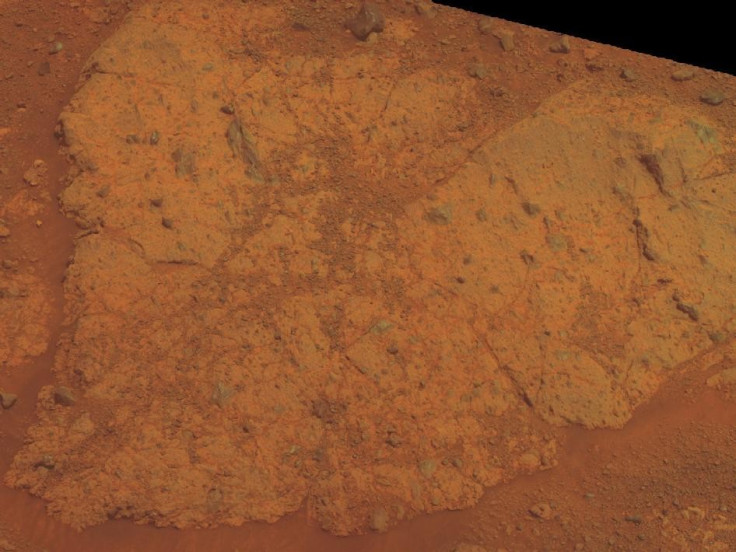New NASA Mars Water Hints at Life on the Red Planet

The NASA Mars Exploration Rover "Opportunity" has discovered fresh evidence suggesting the red planet once housed flowing water streams.
In a statement released Wednesday NASA confirmed the Opportunity had found bright veins of gypsium, a mineral generally deposited by water. The discovery was in-turn interpreted by scientists as evidence that Mars once housed wet environments on its surface.
Discovered on the edge of the Endeavour crater, though small, measuring in at between 0.4 and 0.8-inches wide and 16 to 20-inches long, the vein has since been credited as a key discovery by NASA scientists.
"This tells a slam-dunk story that water flowed through underground fractures in the rock," said Steve Squyres of Cornell University and principal investigator for Opportunity. "This stuff is a fairly pure chemical deposit that formed in place right where we see it. That can't be said for other gypsum seen on Mars or for other water-related minerals Opportunity has found. It's not uncommon on Earth, but on Mars, it's the kind of thing that makes geologists jump out of their chairs."
"It is a mystery where the gypsum sand on northern Mars comes from," Opportunity science-team member Benton Clark of the Space Science Institute in Boulder, Colorado later added. "At Homestake, we see the mineral right where it formed. It will be important to see if there are deposits like this in other areas of Mars."
The news follows a similar discovery made by NASA's Mars Reconnaissance Orbiter back in September. Orbiting the red planet NASA's Mars Reconnaissance Orbiter (MRO) has discovered evidence that warm, salty water may flow across Mars during its warmest months.
The discovery was made when the MRO recorded images and video footage of "finger-like" formations and features running down a number of Martian peaks.
The features were recorded on the steep slopes housed in the middle latitudes of Mars' southern hemisphere. NASA scientists have estimated that the features are around 0.5 to five meters wide. The images showed each feature varying in length with the longest extending hundreds of yards across the martian landscape.
The water is thought to contain salt as the images taken show the flows extend and darken on formations facing the planet's equator. This would mean that the areas captured showing the features would be too warm for carbon-dioxide frost and too cold for pure water.
The researchers have since speculated that the water is briny in character, citing Mars' abundant salt deposits and the fact that brine has a lower freezing point as evidence.
Since the features were discovered NASA was quick to highlight that the water's presence could indicate the existence of life on Mars.
NASA Administrator Charles Bolden commented on the question of potential Martian life: "NASA's Mars Exploration Program keeps bringing us closer to determining whether the Red Planet could harbor life in some form... and it reaffirms Mars as an important future destination for human exploration."
© Copyright IBTimes 2025. All rights reserved.





















